Here’s an amazing sight that caught me unawares in Capadoccia — some paving stones outside a small “museum” (preserved Byzantine hoodoo church) that were chock full of some AMAZING trace fossils. Sense of scale is provided by a Turkish 1-lira coin, about the same size as a U.S. quarter. Check out the variety, size, and preservation quality of these gorgeous things:
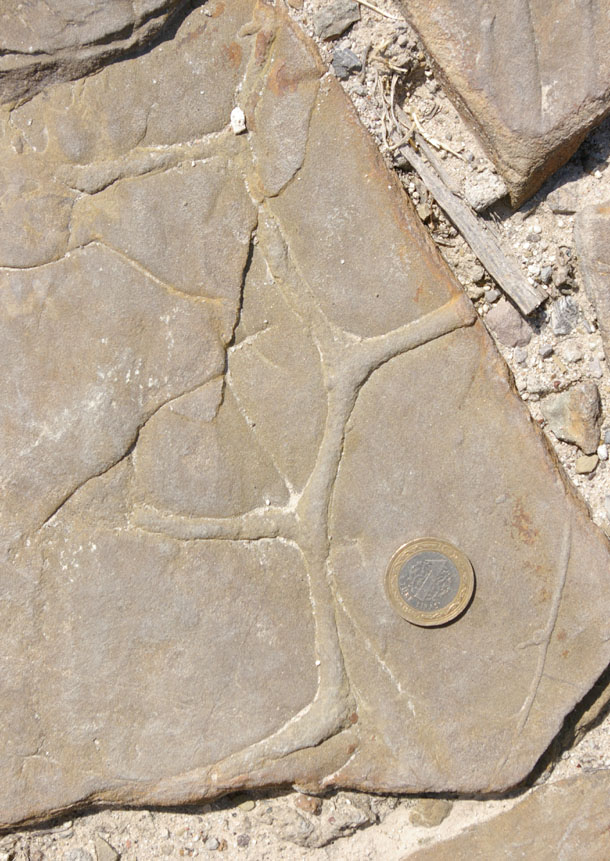
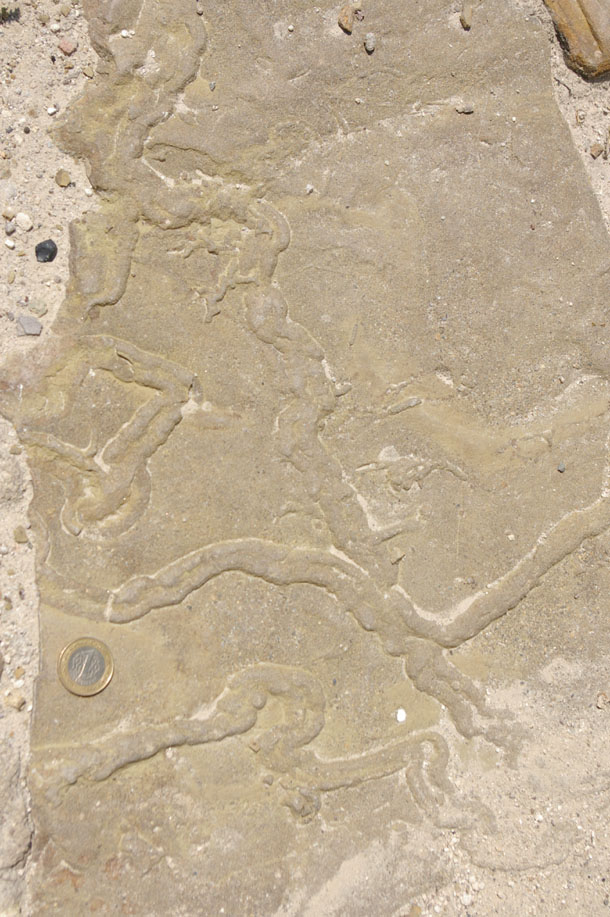
These are “negatives” — molds of depressions that were formed as a new layer (ultimately tougher) of sand was deposited on top of what was probably originally mud. So where the original features were trough-like, we now see raised ridges. They have been inverted, and our “view” is looking “up” as far as deposition was concerned.
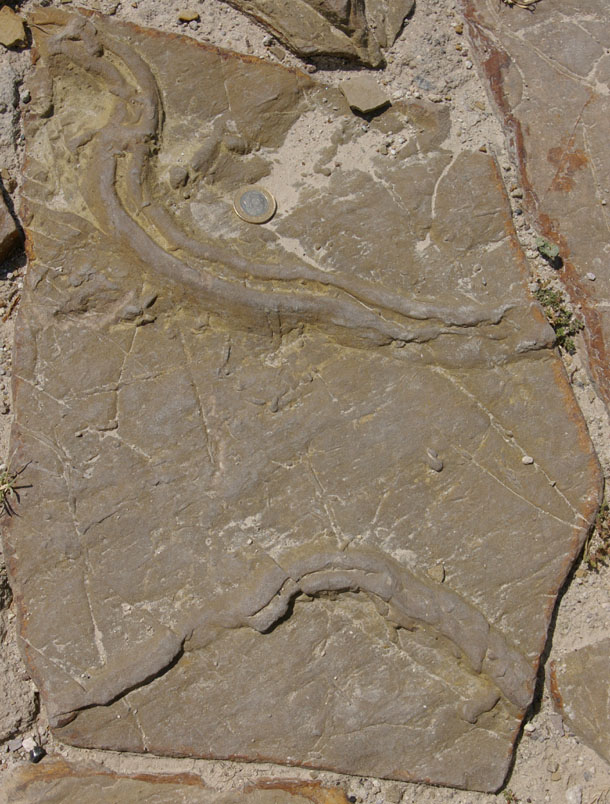
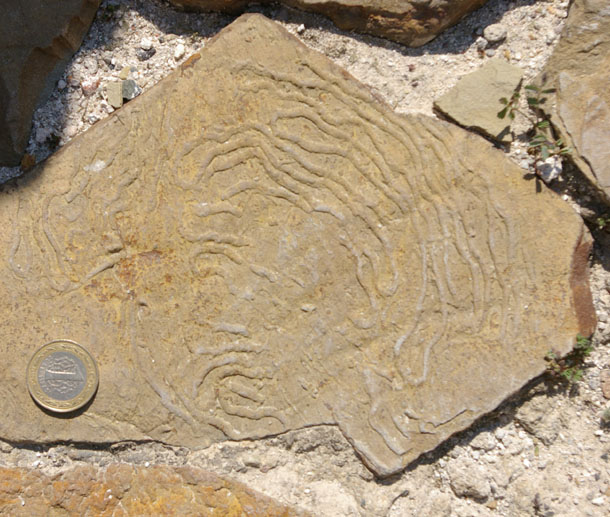
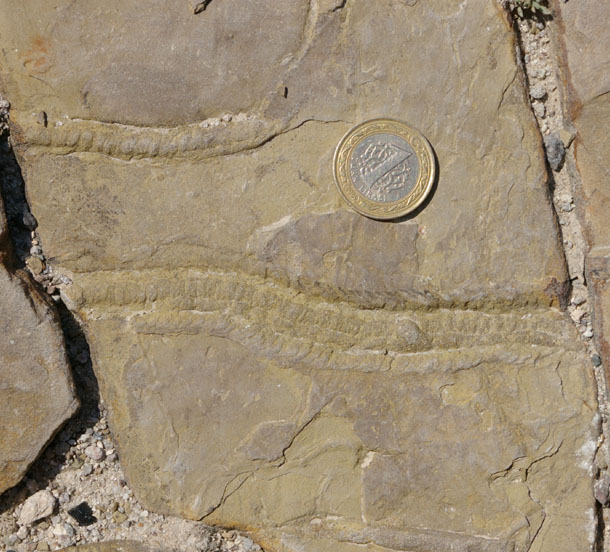
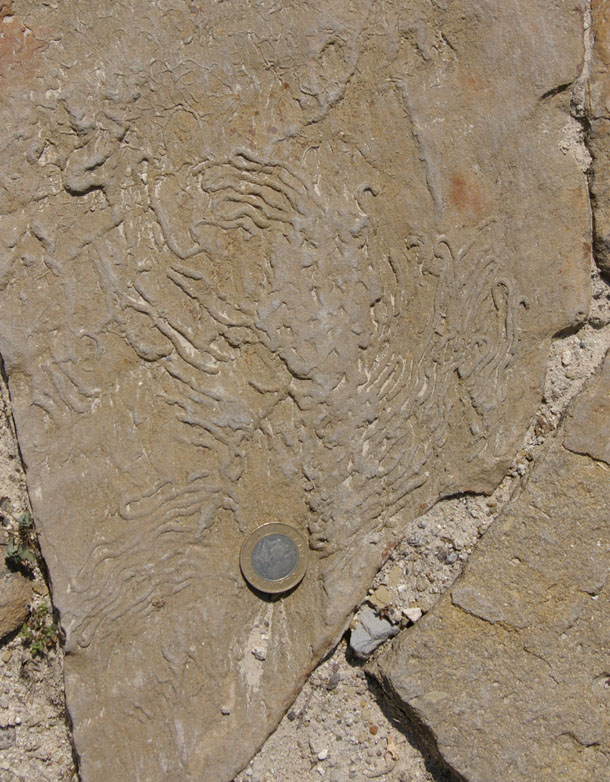
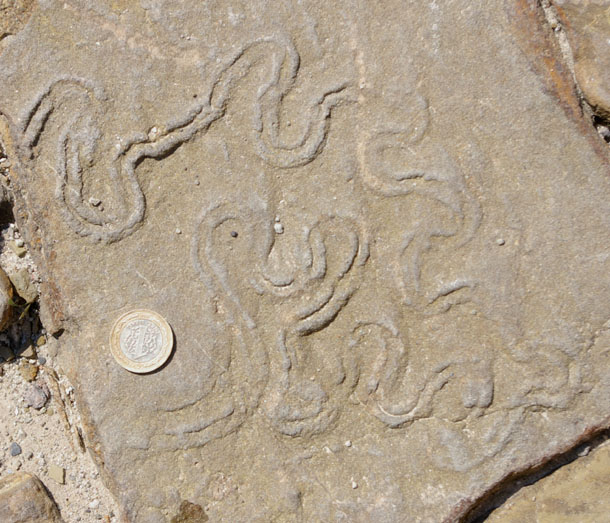
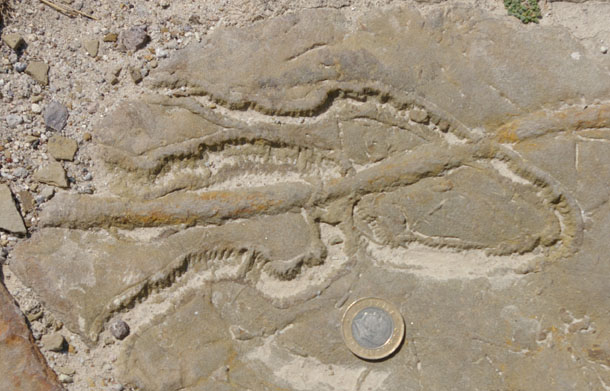
Also some ripple marks (inverted: this is a “bottom up” view like the traces above):

Current would have been flowing from the bottom of the photo towards the top, as the asymmetry of these ripples has the steep side facing “up” before the inverted “mold” was formed. Assuming you’re sitting upright right now as you read this, if you had been lying on the seafloor (?) when these strata were deposited, the current would have been flowing up your nostrils.
Ewwww.

Alright, soo many pictures but I will try and see what I can do, these are an ichnology students best guesses so they may not be perfect.
1. Thalassinoides (crustacean burrows)
2. Scolicia (echinoid burrows)
3. Scolicia
4.Helminthoida
5. Scolicia
6. This has 2. Helminthoida is the larger one but on the top of the picture there is a small trace fossil and it is difficult to see but may be Megagrapton
7. You have to here. Maybe a Thalassinoides and a Scolicia or just 2 different Scolicia’s.
I double checked my answers with my advisor (A.A. Ekdale) and they have been adjusted accordingly.
Oh, I missed one. 7 is just Scolicia and 8 is the 7 from my previous post.
Correction. Not Helminthoida, Helminthorhaphe which is basically the graphoglyptid version of Helminthoida (preserved on the base of a turbidite)